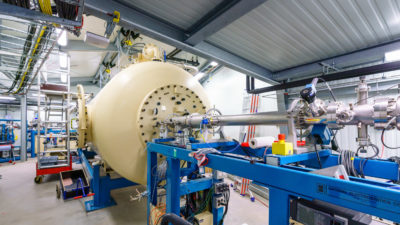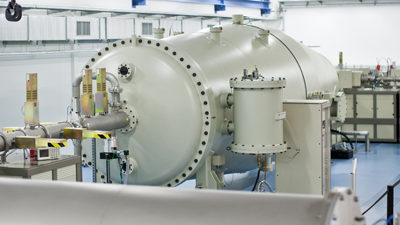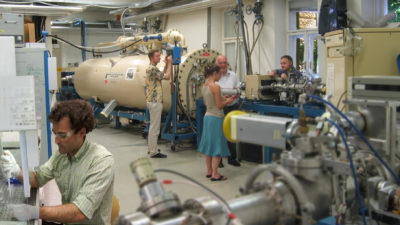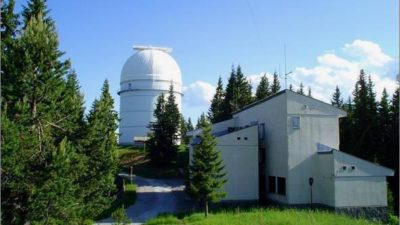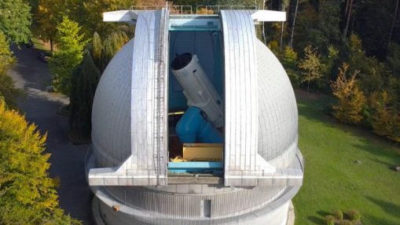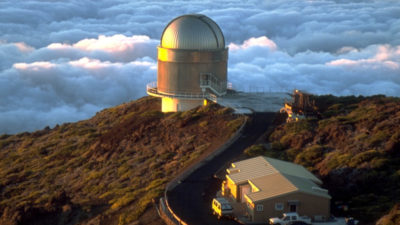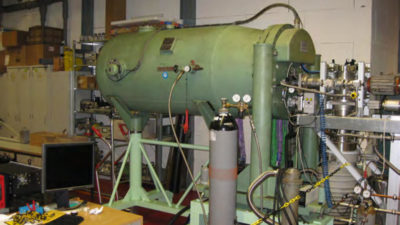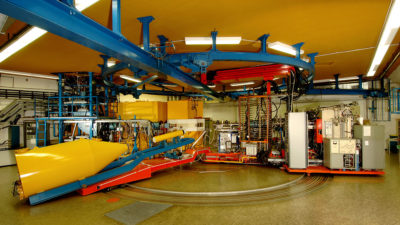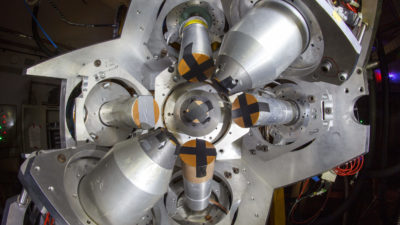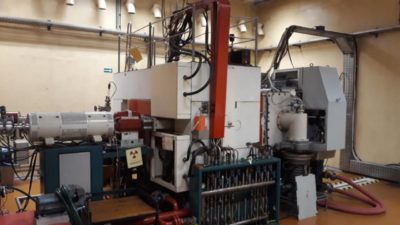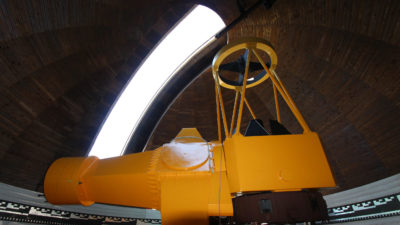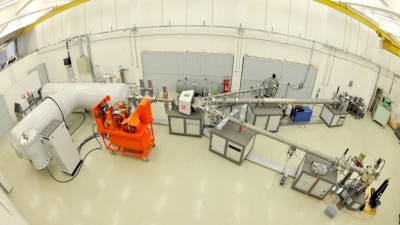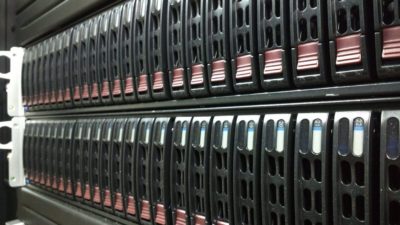Van de Graaff accelerator, Goethe-University Frankfurt (GUF), Germany
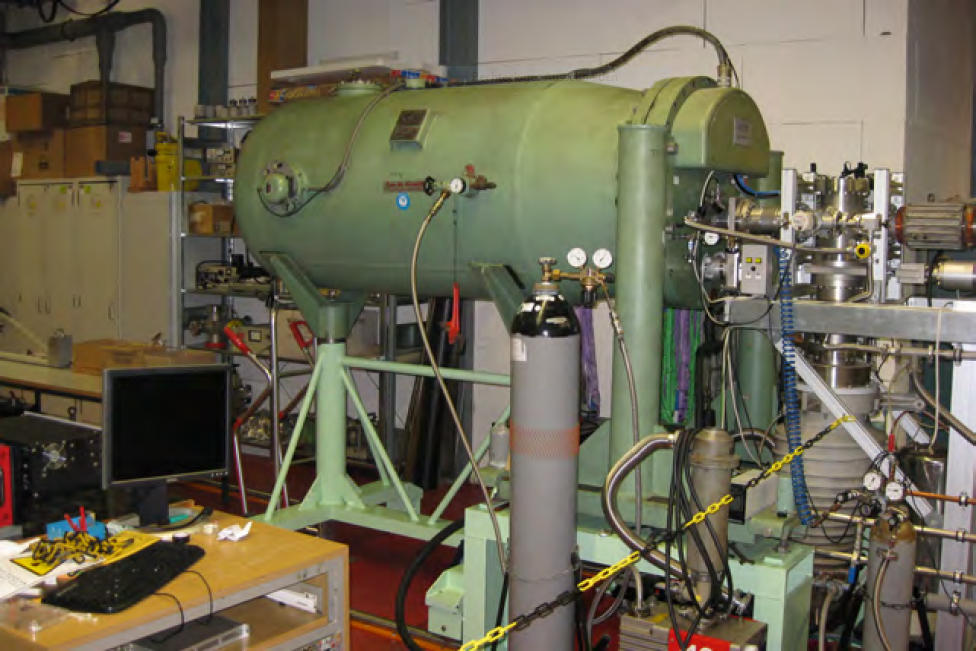
Credit: GUF, Christian Schwarz
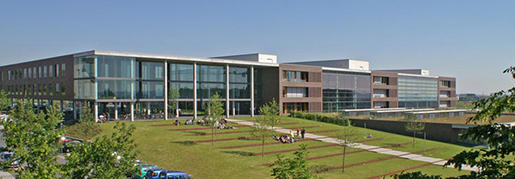
The Frankfurt Van de Graaff accelerator can provide DC proton or alpha beam up to 10 μA. The terminal voltage is in the range of 1 to 2.5 MeV. Neutron production via 7Li(p,n) is possible and the local group has large experience with neutron-induced experiments. The necessary neutrons can be produced via bombarding thin, metallic lithium layers with protons of about 2 MeV. Under such conditions, neutrons with astrophysically interesting energies between 1 keV and 1 MeV are produced. In addition, a suite of 3He and Li-glass neutron detectors is available. This detectors are very well suited to investigate astrophysically important neutron production reaction like 13C(α,n). Activation experiments can be analyzed with a head-to-head setup of 2 Broad-Energy-Germanium-Detectors (BEGe).

ChETEC-INFRA collection dates and user times:
Contact information:
Country of installation:
- Germany
- everyone whose affiliation is outside of Germany can apply for TNA
Key information at a glance:
Presentation of TNA to GUF given at the ChETEC-INFRA kick-off meeting (May 4, 2021):
Quantity of access to be provided:
- 768 beam time hours
Website:
